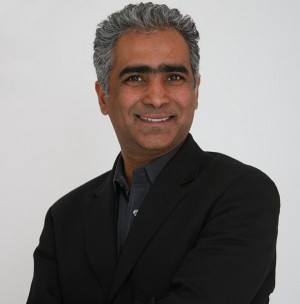Dealing with Art: One Entrepreneur’s Transnational Vision
For the last decade, many illustrious art galleries have been expanding around the world in an effort to keep up with the growing global nature of commerce. Some, like the Michael Werner Gallery, have always had footholds in the U.S. and in Werner’s native Germany, but Werner expanded from Cologne to the more central Berlin in the aftermath of the Berlin Wall’s demise; others, like the unstoppable Larry Gagosian, seem to have opened galleries in any city that had a space for rent, from New York to Athens.
One dealer, Sundaram Tagore, has been doing the international dance more quietly, but with no less serious intent. Tagore is from an eminent Indian family; his great uncle, Rabindranath Tagore, was the first non-westerner to win the Nobel Prize in Literature. Born in Calcutta, he was educated at boarding school in the Himalayas, Oxford University, and also in the United States. He began his art career at the famous Pace Gallery, opening the East to their blue chip stable of artists, until the Asian economic crisis of the late 1990s put the kibosh on that endeavor. He opened his first eponymous New York gallery in 1999 and found permanent space in Chelsea in 2006. In 2007, he expanded to Beverly Hills and then Hong Kong (his was the first international gallery to open there). Low-key and impeccably well-mannered, he differs from many of his brasher colleagues, but don’t let that fool you: this is a man on a mission to bring the world together through art.
It was difficult to get a hold of Tagore as he, along with most of the art world, seemed always to be on a flight somewhere; but we finally caught up as he was about to leave New York for Italy on a chilly December morning. He was not talking about why he was going there, but it had to do with his latest potential expansion, a new gallery in Singapore. Going to Singapore would be a smart move: the estate tax is about to go into effect in Switzerland, where many people have kept their money exempt for generations — which is why a client of Tagore’s has pronounced a predilection for Singapore in the midst of this transformation.
“Being in Singapore would be about having access to that region,” said Tagore. “The world has flattened and there is a constant flow of well-heeled, cultured people going from continent to continent.”
The gallery outposts are like stops on a never-ending Grand Tour – but it’s the ubiquitous art fairs that really draw these days, and they are gaining more power in the Near and Far East. Art Basel, the most powerful of the European fairs, recently purchased Art Hong Kong; Art India is gaining serious ground.
“People barely go to galleries anymore” said Tagore. “They go to the art fairs. There they have access to immediate price comparisons and instant information – and they can mingle with their peers.”
Tagore is a presence at all the major art fairs and many of the smaller ones. For the moment, his home is in Hong Kong with his wife and daughter while he solidifies his position in that part of the world, but eventually he will return to New York for both personal and professional reasons. His stable of artists who show throughout his gallery network is equally balanced between the west and east and includes artists such as Susan Weil, Anil Revri and Hiroshi Senju, among others.
Tagore’s mission is not only to sell art but to provide cultural understanding and information through all its forms, and given his background he is a natural to connect East and West. The gallery program goes beyond fine art, and includes film, poetry, and more. This writer heard an eye opening lecture at the New York space on the legendary Indian film director, Sajit Rey, a huge favorite of Martin Scorsese’s. Tagore has hosted shows, for instance, of both Israeli and Middle Eastern art at his New York gallery and has also has shown Thai art. His immediate future, however, seems to be moving east.
“In America, the law is there to protect you,” said Tagore, “in Asia, it is about relationships and personal references. It can take a long time for people to trust you, but once they are comfortable and know you, they will do everything through you.”
The first show in Singapore, not yet scheduled, will be an educational one, something new or only slightly known in that culture from Western art history.
“I want to bring the margin to the forefront,” concluded Tagore, “and use art as a vehicle to bring people together.”


